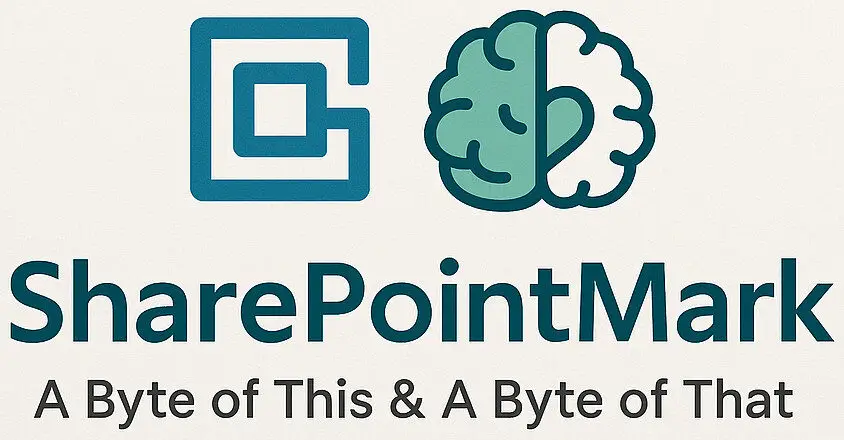From SharePoint 2016 and 2019 to Office 365: The Turning Point in Enterprise IT

From SharePoint 2016 and 2019 to Office 365: The Turning Point in Enterprise IT Continuing my journey through 30 years in IT, this chapter (apologies it is not short) is one that I consider a turning point – not only in my career but also in the direction of enterprise technology globally. The years spanning SharePoint 2016, SharePoint 2019, and the rapid growth of Office 365 reflect the growing debate between staying on-premises and shifting to cloud solutions. These were pivotal years for me, filled with complex migration projects, evolving best practices, and strategic decisions organisations needed to make in light of a rapidly changing IT landscape. It was a time when every project posed the question: “Do we continue with an on-premises environment or embrace the cloud?” The Evolution from SharePoint 2013 to SharePoint 2019 The transition from SharePoint 2013 to SharePoint 2016 and then to SharePoint 2019 marked a significant evolution in on-premises technology, especially as organisations weighed the advantages of cloud integration versus the familiarity of maintaining local control. SharePoint 2013, released in January 2013, had already introduced significant changes – please read my previous post “From SharePoint 2010 to 2013: Embracing the New and Introducing the Cloud“. It was the beginning of a more user-friendly, socially connected platform, which laid the foundation for what would come next. SharePoint 2016 Released in May 2016, represented a hybrid bridge between on-premises solutions and the cloud. Built upon the architecture of SharePoint 2013, SharePoint 2016 focused heavily on integrating cloud-based features from Office 365 back into on-premises environments. The introduction of features like Hybrid Search and Hybrid Sites allowed organisations to use the capabilities of Azure Active Directory (now known as Microsoft Entra ID) for seamless user experiences across both environments. Data Loss Prevention (DLP) and improved OneDrive for Business synchronisation capabilities were other highlights that reflected the gradual shift towards hybrid solutions, leveraging both on-premises and cloud resources. However, despite the growing hybrid capabilities, SharePoint 2016 still provided significant improvements for fully on-premises deployments. It brought enhanced: support for large files, better compliance features, and optimised performance for larger datasets, making it a robust choice for organisations that needed to keep their infrastructure on-premises due to regulatory or business reasons. SharePoint 2016 migrations primarily involved upgrading from SharePoint 2010 or 2013. Due to the increased infrastructure requirements, organisations needed to plan for 64-bit environments, assess database compatibility, and review custom workflows and solutions – often requiring complete re-engineering. SharePoint 2016 was very much a reflection of organisations wanting to embrace some cloud capabilities while still retaining their on-premises roots, and it was a true hybrid solution at its core but often had a level of concern for businesses I delivered projects for. SharePoint 2019 Released in October 2018. SharePoint 2019 was a response to the demand for cloud-like functionality in an on-premises environment. This version brought significant enhancements such as Modern UI, which had become the standard for SharePoint Online. The Modern UI offered a clean, user-friendly experience similar to Office 365, aimed at improving productivity and ease of use. SharePoint 2019 also offered improved communication sites, Team Sites, and tighter integration with PowerApps and Microsoft Flow (now known as Power Automate). These integrations allowed users to create workflows and applications that connected seamlessly with both on-premises and cloud resources. Hybrid Deployment Options and On-Premises Focus One of the key differentiators for SharePoint 2019 was its focus on providing hybrid deployment options. While Office 365 was quickly gaining traction, many organisations were still cautious about fully moving to the cloud. Hybrid deployments provided the best of both worlds – offering access to cloud-based innovations while still keeping sensitive data and workloads on-premises. Features like Hybrid Search allowed users to search seamlessly across both on-premises and cloud content, bridging the gap between environments and making data easier to discover and manage. SharePoint 2019 also included features that appealed to those wishing to retain full on-premises control. These included support for large files (up to 15GB), improved List and Library interfaces that mirrored the Office 365 experience, and enhanced compliance and security features that provided enterprise-level data protection. The improvements in OneDrive functionality also brought a more consistent sync experience, reducing friction between on-premises and cloud-based file management. Migration Challenges Migration from earlier versions of SharePoint (2013 and 2016) to SharePoint 2019 came with its set of challenges – particularly with customisations. Much like the transition to SharePoint 2016, custom-coded solutions and workflows often had to be redeveloped to be compatible with the Modern UI. The Modern UI was a major advancement, providing a sleek, intuitive interface that improved usability, but it required updates to custom web parts and other components developed in older versions. In addition, while SharePoint 2019 sought to replicate many of the cloud capabilities, it lacked the continuous update frequency of Office 365, meaning features often lagged behind their cloud equivalents. This disparity required careful planning and management to ensure that organisations could achieve their desired level of functionality without losing key features during the migration. For many organisations, the choice between SharePoint 2019 and Office 365 was not a simple one. SharePoint 2019 offered the reliability, control, and compliance that many industries required, especially those in regulated sectors where data sovereignty and strict compliance were critical. On the “other side of the scales”, Office 365 was beginning to redefine productivity, with its promise of constant updates, advanced collaboration tools, and integration with other Microsoft cloud services. Hybrid solutions provided a stepping stone for those who weren’t ready to fully transition, allowing them to modernise their environment without losing the control they were used to. The Rise of Office 365 and Its Growing Influence While the on-premises versions of SharePoint evolved, Office 365 started to become a compelling option for many organisations. Originally launched as a rebranding of BPOS in 2011, by January 2019, Office 365 had grown to become a comprehensive ecosystem offering productivity tools, collaboration, automation, and security – all powered by
